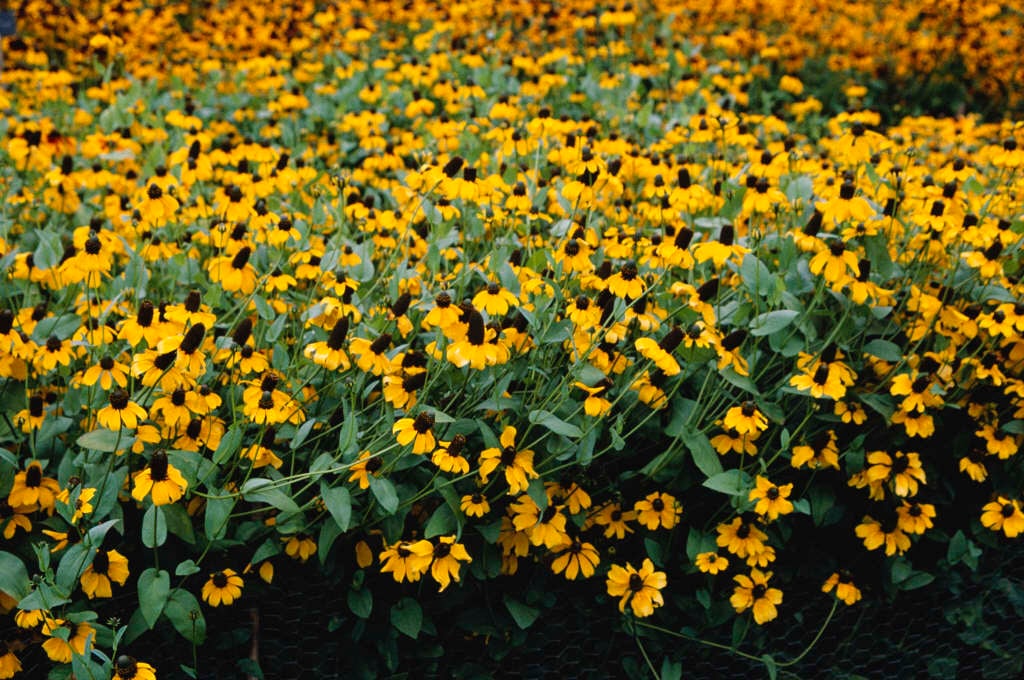Not the plant you're looking for? Search over 300,000 plants
Annual Biennial
Size
Ultimate height
0.5–1 metresTime to ultimate height
1–2 yearsUltimate spread
0.1–0.5 metresGrowing conditions
Chalk
Clay
Loam
Moisture
Moist but well–drainedpH
Acid, Alkaline, NeutralColour & scent
| Stem | Flower | Foliage | Fruit | |
| Spring | Blue Green | |||
|---|---|---|---|---|
| Summer | Brown Yellow | Blue Green | ||
| Autumn | Brown Yellow | Blue Green | ||
| Winter |
Position
- Full sun
- Partial shade
Aspect
East–facing or South–facing
Exposure
Exposed or Sheltered Hardiness
H7Botanical details
- Family
- Asteraceae
- Native to GB / Ireland
- No
- Foliage
- Deciduous
- Habit
- Bushy
- Genus
Rudbeckia may be annuals, biennials or rhizomatous herbaceous perennials, with simple or pinnately divided leaves and large daisy-like flower-heads with yellow or orange rays surrounding a prominent conical disk
- Name status
Correct
How to grow
Cultivation
Grow in moderately fertile heavy, moist but well-drained soil that does not dry out, in full sun or partial shade
Propagation
Propagate by seed sown at 16-18°C in early spring
Suggested planting locations and garden types
- Cottage and informal garden
- Prairie planting
- City and courtyard gardens
- Coastal
- Wildlife gardens
- Cut flowers
- Flower borders and beds
Pruning
Cut back after flowering
Pests
May be susceptible to slugs
Diseases
Generally disease-free
Get involved
The Royal Horticultural Society is the UK’s leading gardening charity. We aim to enrich everyone’s life through plants, and make the UK a greener and more beautiful place.
